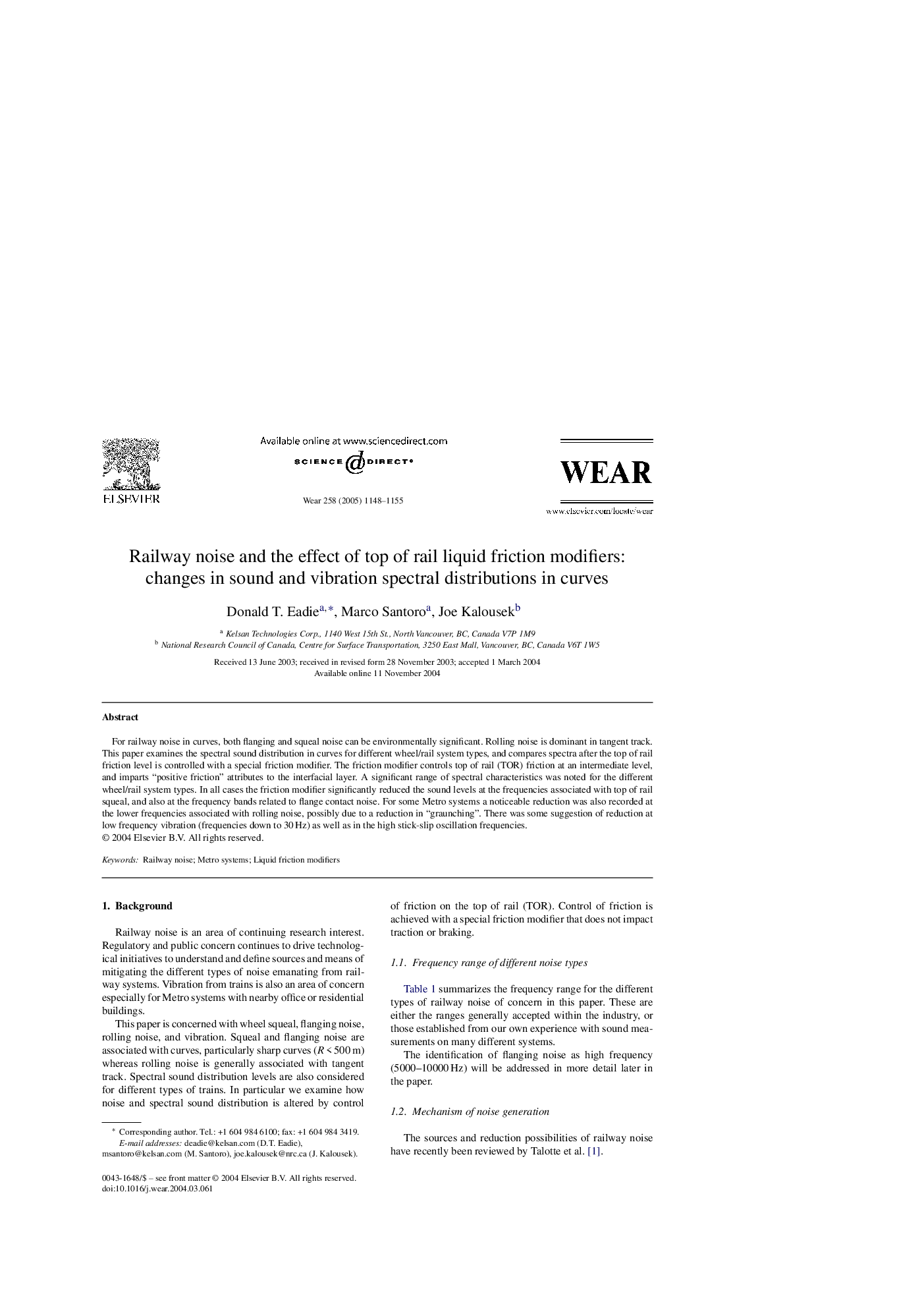| Article ID | Journal | Published Year | Pages | File Type |
|---|---|---|---|---|
| 9679534 | Wear | 2005 | 8 Pages |
Abstract
For railway noise in curves, both flanging and squeal noise can be environmentally significant. Rolling noise is dominant in tangent track. This paper examines the spectral sound distribution in curves for different wheel/rail system types, and compares spectra after the top of rail friction level is controlled with a special friction modifier. The friction modifier controls top of rail (TOR) friction at an intermediate level, and imparts “positive friction” attributes to the interfacial layer. A significant range of spectral characteristics was noted for the different wheel/rail system types. In all cases the friction modifier significantly reduced the sound levels at the frequencies associated with top of rail squeal, and also at the frequency bands related to flange contact noise. For some Metro systems a noticeable reduction was also recorded at the lower frequencies associated with rolling noise, possibly due to a reduction in “graunching”. There was some suggestion of reduction at low frequency vibration (frequencies down to 30Â Hz) as well as in the high stick-slip oscillation frequencies.
Keywords
Related Topics
Physical Sciences and Engineering
Chemical Engineering
Colloid and Surface Chemistry
Authors
Donald T. Eadie, Marco Santoro, Joe Kalousek,
